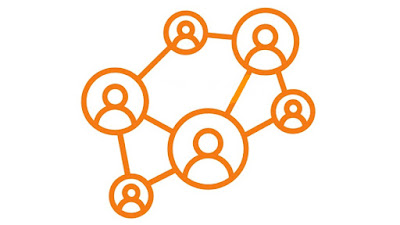In the vast ecosystem of organisational success, two types of intellectual assets stand out: human capital and structural capital. While structural capital embodies the knowledge, systems, and processes inherent in an organisation, human capital focuses on the talents, skills, and competencies of its workforce. This essay seeks to underscore the pivotal role of human capital in optimising an organisation's structural capital, thereby ensuring sustained competitive advantage and superior performance.
Before discussing the interplay between human and structural capital, herewith a brief description of each:
· Human Capital: It pertains to the knowledge, skills, and abilities of employees. It's what individuals bring to an organisation, from problem-solving skills to innovative ideas, to relationship-building capabilities (Sen, Kumar, and Biswal, 2023).
· Structural Capital: This represents the non-human storehouses of knowledge in an organisation, like databases, organisational procedures, information systems, and corporate culture (Sen et al, 2023; Van Winkelen and and McKenzie, 2009).
Human Capital is indeed needed to be the driver of structural capital optimisation via the following interactions (Bouzakhem, Farmanesh, Zargar, Ramadan, Baydoun, Daouk, and Mouazen, 2023; Shrivastava, Ikonen, Savolainen, and Dorjgotov, 2021):
· Knowledge Management: The effectiveness of structural capital lies in its apt utilisation. Human capital, with its inherent expertise and experience, plays a pivotal role in cataloguing, updating, and leveraging the knowledge repositories to their full potential (Markić, Požega, and Crnković, 2022).
· Cultural Ambassadors: Organisational culture, a significant component of structural capital, is not just written in manuals but is lived daily by employees. It's the human capital that brings this culture to life, ensuring that it's more than just a set of documented ideals.
· Continuous Improvement: Structural processes and procedures require regular updates to stay relevant. The feedback loop from employees—those at the forefront of industry changes—is invaluable in refining these processes (Tseng, Wang and Yen, 2014).
· Innovation Through Collaboration: While structural capital can house knowledge, it is the human capital that breathes life into this knowledge. The collaborative efforts of teams can lead to novel ways of leveraging existing systems, thus optimising structural assets (Tseng, Wang and Yen, 2014).
There are therefore specific implications for organisations in assisting with this optimisation (Sen et al, 2023; Van Winkelen et al, 2009):
· Investment in Training and Development: To ensure that human capital can effectively leverage and optimise structural capital, continuous training and skill development become imperative. An employee familiar with the latest technological systems can better harness the power of organisational databases.
· Feedback Mechanisms: Establishing robust feedback mechanisms ensures that insights from human capital are seamlessly integrated into refining structural assets.
· Balancing Stability and Agility: While structural capital offers stability, it's the human capital that provides agility. Organisations must find a balance, allowing structures to guide operations while also giving individuals the flexibility to innovate.
· Retention Strategies: The optimization of structural capital is a continuous journey, and retaining experienced employees, who understand the intricacies of these structures, becomes crucial. High employee turnover can lead to a disconnect between the human and structural elements of intellectual capital.
While structural capital forms the backbone of an organisation, human capital serves as its lifeblood. The symbiotic relationship between the two ensures that the organisation not only preserves and stores knowledge but also uses it effectively. To optimise structural capital, businesses must focus on nurturing, developing, and retaining their human assets. In the interplay between factors, such as, human capabilities, intuition and structural processes, lies the secret ingredients of organisational success.
REFERENCE LIST
Bouzakhem, N., Farmanesh, P., Zargar, P., Ramadan, M., Baydoun, H., Daouk, A., and Mouazen, A. (2023). Rebuilding the Workplace in the Post-Pandemic Age through Human Capital Development Programs: A Moderated Mediation Model. Administrative Sciences (2076-3387). Jul2023, Vol. 13 Issue 7.
Mara, C., Govender, C., and Makka, A. (2021). Contribution of Human Capital Development (Hcd) to Organisational Effectiveness in the Southern African Hospitality Industry. African Journal of Business & Economic Research. Sep2021, Vol. 16 Issue 3, p195-214.
Markić, M’, Požega, Ž., and Crnković, B. (2022). The Impact of Knowledge Management on the Economic Indicators of the Companies. South East European Journal of Economics and Business Volume 17 (2) 2022, 34-48.
Ray, C., Nyberg, A., and Maltarich, M.A. (2023). Human Capital Resources Emergence Theory: The Role of Social Capital. Academy of Management Review. Apr2023, Vol. 48 Issue 2, p313-335.
Sen, L., Kumar, A., and Biswal, S.K. (2023). An Inferential Response of Organizational Culture upon Human Capital Development: A Justification on the Healthcare Service Sector. Folia Oeconomica Stetinensia. Jun2023, Vol. 23 Issue 1, p208-227.
Shrivastava, P., Ikonen, M., Savolainen, T., and Dorjgotov, E. (2021). Developing and Sustaining Trust within Human Capital during Organisational Transformation. Nordic Journal of Business. Autumn2021, Vol. 70 Issue 3, p207-223.
Tseng, J-F., Wang, H-K, and Yen, Y-F. (2014). Organisational innovability: exploring the impact of human and social capital in the banking industry. Total Quality Management & Business Excellence. 2014, Vol. 25 Issue 9/10, p1088-1104.
van Winkelen, C., and McKenzie, J. (2019). Using Scenarios to Explore the Potential for Shifts in the Relative Priority of Human, Structural and Relational Capital in Generating Value. Proceedings of the European Conference on Intellectual Capital. 2009, p501-508.

No comments:
Post a Comment
Thank you for taking the time to leave a comment. However, spam, nonsense or comment that may be unhelpful to other readers will be removed.